When Clearaudio decides to build an “entry-level” turntable, they don’t water anything down—they just bring more people into the temple. The new Clearaudio Compass is exactly that: a ready-to-play turntable that brings the brand’s obsession with precision engineering, high-end build quality, and uncompromising playback performance to a wider audience.
At its heart is a newly developed precision bearing system paired with a finely machined platter and sub-platter—hallmarks of Clearaudio’s approach to vibration control and mechanical accuracy. The new T1 tonearm, a scaled-down sibling of the acclaimed Satisfy arm, works in tandem with the freshly developed N1 moving-magnet cartridge to extract serious detail from your records.
Available in sleek black or silver and topped with a detachable acrylic lid, the €1,290 Compass may look minimalist, but there’s nothing casual about the performance.
As CEO Robert Suchy puts it, “Clearaudio has always stood for uncompromising quality, ultimate precision, and exceptional design. With Compass, we’re welcoming more music lovers into that experience—without compromising the values that got us here.”

Why Clearaudio’s Precision Ethos Sets It Apart from Every Other Turntable Brand
Back in 1999, I spent five days with Robert and Peter Suchy at the Top Audio/Video Show in Milan — and more than 26 years later, that experience still hasn’t faded. You don’t forget time spent with people who are not only intensely smart and technically gifted, but also warm, wickedly funny, and deeply rooted in a sense of history and purpose. These weren’t just guys selling turntables — they were building a legacy, one machined part at a time.
Yes, the high-end analog world is full of multi-generational stories — Rega, VPI, Linn, and a few others all carry that family-run torch. But Clearaudio stands apart, and not just because they’ve mastered the art of German overengineering. They blend it with a design ethos that feels both future-focused and surgically precise.
While others are chasing nostalgia or leaning hard on heritage, Clearaudio is busy building the next-generation analog experience — complete with tonearms that look like they were sketched by aerospace engineers and bearings that could pass for lab-grade instrumentation. They’ve figured out how to inject soul into science without ever compromising either.
And unlike some brands that wear the “Made in Germany” badge like a marketing flex, Clearaudio actually lives it — everything from the machining to the electronics to the cartridge assembly is done in-house by people who are trained, mentored, and in many cases, family.
It’s that rare balance: no-nonsense precision with a quiet, relentless passion behind it. And somehow, they still manage to laugh through it all — which, let’s be honest, is the most un-German thing about them.
What makes Clearaudio different? Start with the fact that they design, engineer, and build everything in Erlangen, Germany — not exactly a tourist trap, but home to one of Europe’s top science universities and just down the road from the Fraunhofer and Max Planck Institutes. This isn’t some off-the-shelf vinyl kit — Clearaudio turntables come out of a place where physics and precision engineering are in the water.
That level of detail is why even their so-called “entry-level” products can embarrass gear twice the price.
What really sets Clearaudio apart is their long game. They’re not just building for audiophiles today—they’re training the next generation to carry the torch, and doing it all with an eye on sustainability. Their HQ is smack in the middle of a nature reserve. High-end audio with a conscience? That’s rare.
Long story short: Clearaudio isn’t chasing trends. They’re shaping the future of analog audio — with gear that looks as good as it sounds, and lasts long enough to be handed down.

Clearaudio Compass Turntable: Specifications and Engineering Highlights
The Clearaudio Compass is a resonance-optimized turntable built on a chassis made from medium-density wood fibre, available in sleek black or silver. A steel bottom plate adds mass and stability, while decoupling elements help isolate the turntable from external vibrations for more accurate playback.
The Compass supports both 33⅓ and 45 RPM speeds and uses a decoupled, resonance-damped 12V DC motor with a precision flat belt-drive system. Power is supplied via a universal plug-in adapter compatible with all global voltages and frequencies.
At the heart of the Compass is a high-precision bearing assembly featuring a polished, tempered steel spindle housed in a sintered bronze bushing. The spindle rides on a Teflon thrust pad, ensuring low-friction operation and long-term reliability. The platter system consists of a 20mm acrylic main platter with high dimensional stability, paired with a CNC-machined aluminum sub-platter for added rotational accuracy.
Speed accuracy is rated at an impressive ±0.05%. Power consumption is modest, with the Compass drawing just 1.95 watts during playback, 0.74 watts in standby, and absolutely zero when fully powered off via the bottom-mounted switch. The total weight comes in around 8kg (including tonearm and cartridge), and dimensions are approximately 17.13″ (W) x 13.39″ (D) x 4.72″ (H) with the dustcover in place — or 435 x 340 x 120mm in metric.

Clearaudio T1 Tonearm: German Precision with No Patience for Slop
Mounted on the Compass is Clearaudio’s new T1 radial tonearm — a compact, no-nonsense version of their acclaimed Satisfy model, built for those who want high-end performance without the fuss. Crafted from aircraft-grade aluminum in black or silver, and paired with a stainless steel counterweight, the T1 doesn’t just look sharp — it tracks like a sniper.
With a cartridge balance range of 2.5g to 17.0g, it plays nice with just about anything short of a moving coil from the Dark Ages. Overhang is dialed in at 17.12mm, with an effective length of 239.12mm and a pivot-to-spindle mounting distance of 222.00mm — because of course the Germans calculated it to the hundredth. The offset angle? A surgical 24.02°, naturally.
Signal flow is handled by Clearaudio’s own 1.1-meter Direct Wire PLUS cable, factory-terminated with RCA connectors. No weird adapters. No DIY solder jobs. Just plug it in and play. Total tonearm weight, including the counterweight, is approximately 390g — light enough to float, heavy enough to crush any resonance that dares show up.

Clearaudio N1 Cartridge: Elliptical Attitude with MM Swagger
Clearaudio’s newly developed N1 moving magnet cartridge ships with the Compass, and it’s not just there to fill a box. This aluminum-bodied overachiever weighs in at 14.3g (± 0.2g) and is engineered to deliver exactly what you’d expect from a company that builds turntables in a repurposed WWII aircraft hangar — precision, performance, and zero tolerance for mediocre grooves.
The N1’s frequency response stretches from 20Hz to 20kHz — so yes, it hears more than your cousin’s Bluetooth speaker. Output voltage is a respectable 3.3mV (measured at 1kHz, 5cm/s), making it compatible with most phono stages that don’t live in a museum. Channel separation hits 20dB, and channel balance is kept tight at 2dB for that sweet stereo image.
Tracking ability is 80μm, which means it can handle warps and wiggles like a champ. Recommended tracking force is 2.2g (± 0.3g), and with a compliance of 15μm/mN, it’s tuned for smooth, responsive performance — not Olympic-level gymnastics.
The coil specs are equally dialed in: 0.66kΩ impedance at 1kHz, 400mH inductance, 47kΩ load resistance, and a 100pF load capacitance. Translation? Clean signal, minimal noise, and no unnecessary drama. The stylus rides on an aluminum cantilever with an elliptical diamond tip — because even your records deserve a precision haircut.

The Bottom Line
The Clearaudio Compass is going to be a real pain in the ass for Rega, Pro-Ject, VPI, and Thorens because it undercuts the usual entry-level compromises. At this price, you’re getting German engineering with a real sub-platter system, precision bearing, new tonearm design, and a properly aligned MM cartridge—all built in one of the most sophisticated high-end audio facilities on the planet. It doesn’t just look serious—it is serious. And that makes it a problem for brands coasting on name recognition and MDF boxes.
The Clearaudio Compass is now entering production and is expected to arrive at Clearaudio dealers worldwide by September 2025, with a suggested retail price of €1,290. Global pricing to be confirmed.
For more information: clearaudio.de
Related Reading:



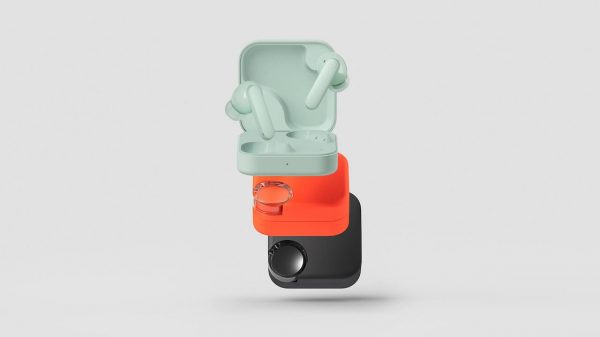




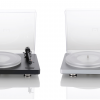



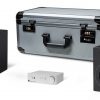
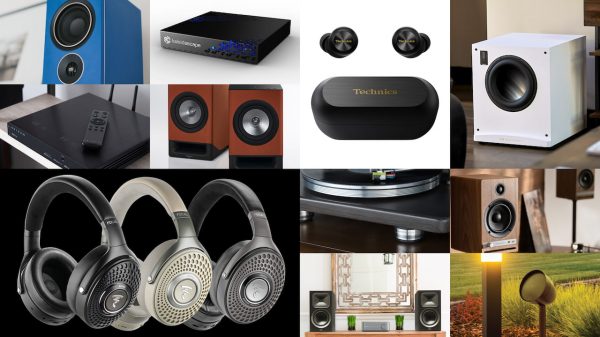
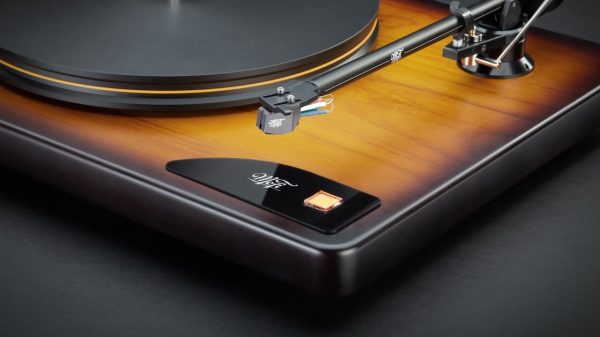
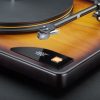
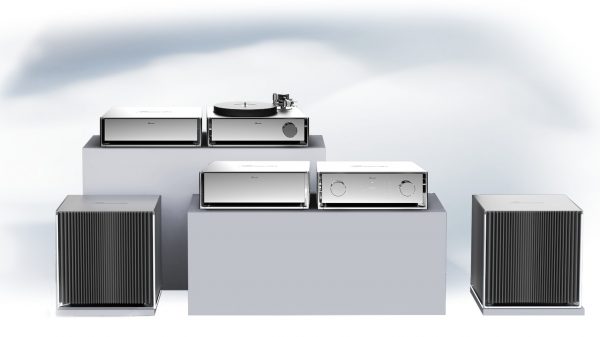
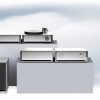
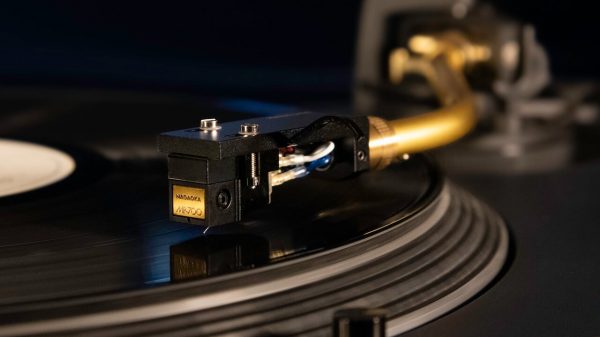
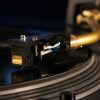
















Anton
June 3, 2025 at 8:04 pm
Based on your recent article about European hi-fi, is it safe to say that you will never own something like one of these turntables? You seem to have a lot of knowledge and experience with their turntables and it’s pretty obvious that you think they are superior to VPI and Linn.
Ian White
June 3, 2025 at 8:12 pm
Anton,
Putting aside my personal family history and issues with “Germany”– Clearaudio makes superb turntables. I’ve owned one of their cartridges and didn’t love it. If I had the scratch, I’d probably still buy a Kuzma, but there are a number of Clearaudio tables with a Hana SL or top Ortofon or Grado that sound incredible. Build quality and reliability trump Linn or VPI.
IW
Anton
June 3, 2025 at 8:40 pm
I also thought the Linn tables were overpriced and inferior to the best Thorens tables.
VPI has always struck me as being the “best” American turntable maker and I do like strong impact that they make with a good cartridge. I also think their tables leave a little to be desired from an aesthetic perspective but I guess everyone sees design differently.
Ian White
June 3, 2025 at 8:50 pm
Anton,
I’m firmly in the Thorens camp so no argument here in regard to that.
But give Linn some credit for improving on an existing deck and making it a lot better and creating a lot of buzz around high end turntables.
VPI is 100% the best American turntable manufacturer right now. I actually like the older HW-19 and Signature 3 because of their wood plinths and heavy aluminum platters or acrylic ones on the HW-19.
You will always get first rate customer service from VPI. That’s been their biggest plus over the past 45 years. The 3D printed tonearm was also a cool concept.